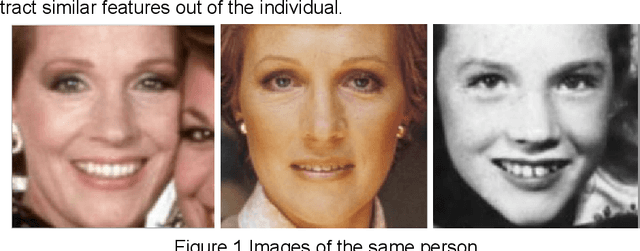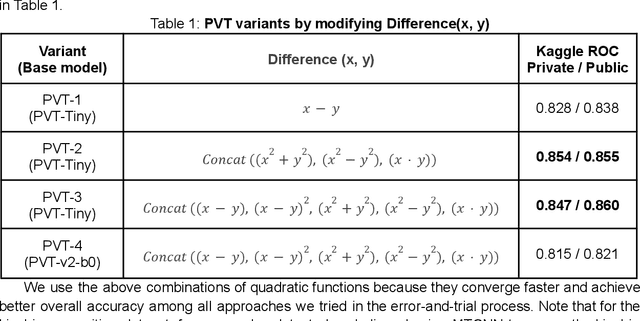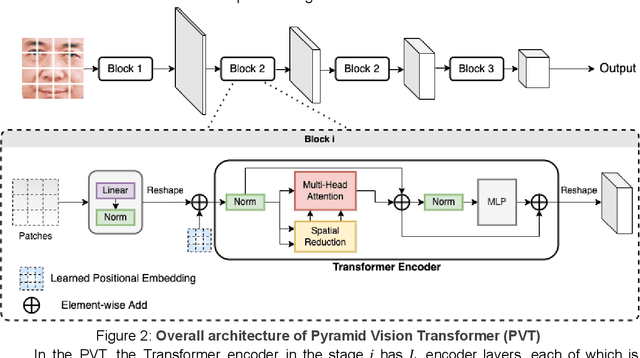Mingchuan Tian
Generative Adversarial Networks for Dental Patient Identity Protection in Orthodontic Educational Imaging
Jul 05, 2023Abstract:Objectives: This research introduces a novel area-preserving Generative Adversarial Networks (GAN) inversion technique for effectively de-identifying dental patient images. This innovative method addresses privacy concerns while preserving key dental features, thereby generating valuable resources for dental education and research. Methods: We enhanced the existing GAN Inversion methodology to maximize the preservation of dental characteristics within the synthesized images. A comprehensive technical framework incorporating several deep learning models was developed to provide end-to-end development guidance and practical application for image de-identification. Results: Our approach was assessed with varied facial pictures, extensively used for diagnosing skeletal asymmetry and facial anomalies. Results demonstrated our model's ability to adapt the context from one image to another, maintaining compatibility, while preserving dental features essential for oral diagnosis and dental education. A panel of five clinicians conducted an evaluation on a set of original and GAN-processed images. The generated images achieved effective de-identification, maintaining the realism of important dental features and were deemed useful for dental diagnostics and education. Clinical Significance: Our GAN model and the encompassing framework can streamline the de-identification process of dental patient images, enhancing efficiency in dental education. This method improves students' diagnostic capabilities by offering more exposure to orthodontic malocclusions. Furthermore, it facilitates the creation of de-identified datasets for broader 2D image research at major research institutions.
Kaggle Kinship Recognition Challenge: Introduction of Convolution-Free Model to boost conventional
Jun 11, 2022



Abstract:This work aims to explore a convolution-free base classifier that can be used to widen the variations of the conventional ensemble classifier. Specifically, we propose Vision Transformers as base classifiers to combine with CNNs for a unique ensemble solution in Kaggle kinship recognition. In this paper, we verify our proposed idea by implementing and optimizing variants of the Vision Transformer model on top of the existing CNN models. The combined models achieve better scores than conventional ensemble classifiers based solely on CNN variants. We demonstrate that highly optimized CNN ensembles publicly available on the Kaggle Discussion board can easily achieve a significant boost in ROC score by simply ensemble with variants of the Vision Transformer model due to low correlation.
Low power communication signal enhancement method of Internet of things based on nonlocal mean denoising
May 14, 2022



Abstract:In order to improve the transmission effect of low-power communication signal of Internet of things and compress the enhancement time of low-power communication signal, this paper designs a low-power communication signal enhancement method of Internet of things based on nonlocal mean denoising. Firstly, the residual of one-dimensional communication layer is pre processed by convolution core to obtain the residual of one-dimensional communication layer; Then, according to the two classification recognition method, the noise reduction signal feature recognition of the low-power communication signal of the Internet of things is realized, the non local mean noise reduction algorithm is used to remove the low-power communication signal of the Internet of things, and the weight value between similar blocks is calculated according to the European distance method. Finally, the low-power communication signal enhancement of the Internet of things is realized by the non local mean value denoising method. The experimental results show that the communication signal enhancement time overhead of this method is low, which is always less than 2.6s. The lowest bit error rate after signal enhancement is about 1%, and the signal-to-noise ratio is up to 18 dB, which shows that this method can achieve signal enhancement.
 Add to Chrome
Add to Chrome Add to Firefox
Add to Firefox Add to Edge
Add to Edge